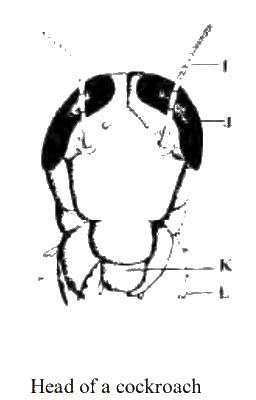A) two auricles and two ventricles
B) one auricle and one ventricle
C) two ventricle and one auricle
D) one ventricle and two auricles
Show Answer
The correct answer is D .

The mouth part of the insect is adapted for
Options:A) biting and chewing
B) sucking and chewing
C) biting and sucking
D) piercing and sucking
Show Answer
The correct answer is A .
A) dung
B) bones
C) ceramics
D) woods
Show Answer
The correct answer is C .
A) Pileus
B) Mycelium
C) Basidium
D) Stipe
Show Answer
The correct answer is A .
The type of nutrition in which two organisms of different species live together and derive nutrients from each other is
Options:A) symbiotic nutrition
B) saprophytic nutrition
C) holozoic nutrition
D) holophytic nutrition
Show Answer
The correct answer is A .
A) Rhizophus, earthworm and protozoa
B) Mushroom, rhizophus and bacteria
C) Bacteria, earthworm and nematodes
D) earthworm, sedges and platyhelminthes
Show Answer
The correct answer is B .
A) An increase in biomass
B) A decrease in the efficiency
C) An increase in the total numbers of resulting individuals
D) A decrease in the resulting biomass
Show Answer
The correct answer is D .
A) mesophytes
B) hydrophytes
C) epiphytes
D) xerophytes
Show Answer
The correct answer is D .
A) it contains more organisms
B) it has greater energy source
C) it is not easy to destroy
D) every organism has an alternative source
Show Answer
The correct answer is D .

The structure labelled I is formed as a result of the fusion of
Options:A) two pairs of nuclei
B) several pairs of nuclei
C) a pair of nuclei
D) two pairs of nucleoli
Show Answer
The correct answer is B .